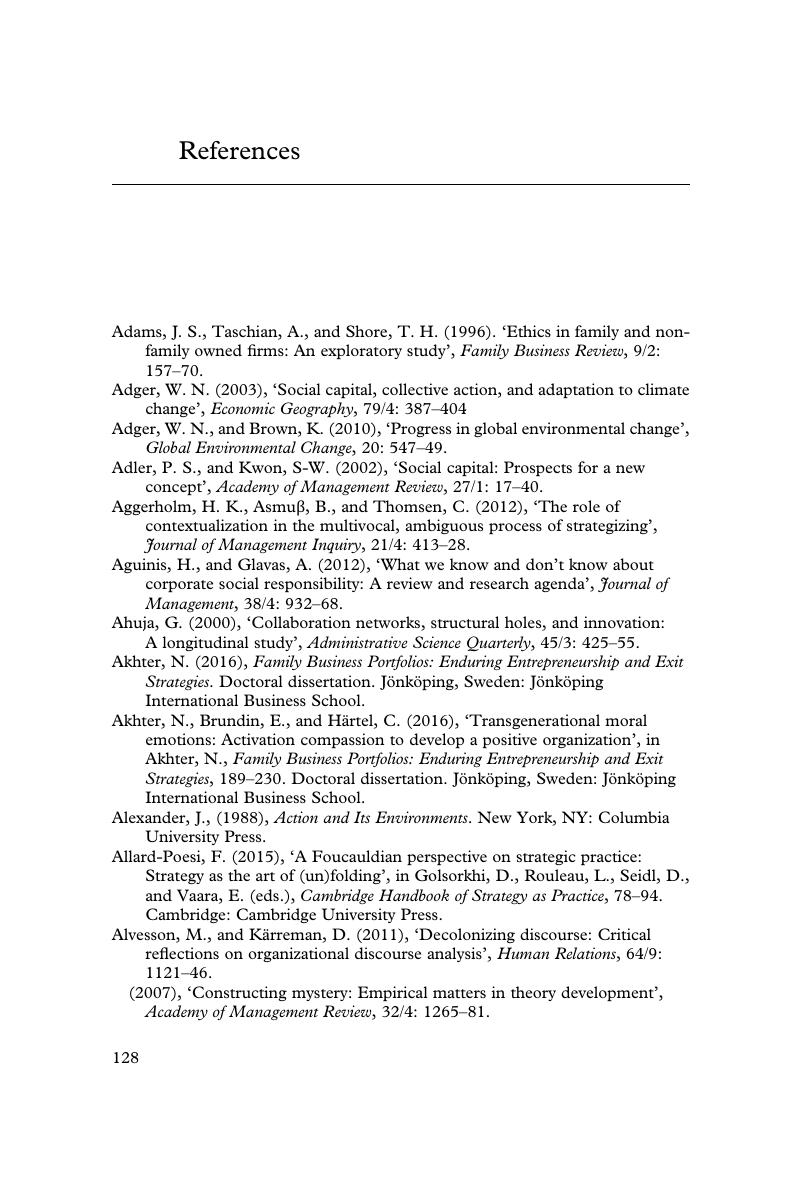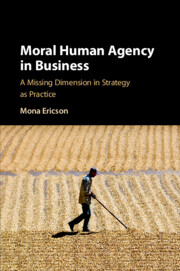Book contents
- Moral Human Agency in Business
- Moral Human Agency in Business
- Copyright page
- Dedication
- Contents
- Acknowledgements
- 1 Travelling a World of Strategy Practising
- 2 Strategy-as-Practice Research without a Concern for Morality
- 3 Under the Influence of the Old Cosmology
- 4 The Löfbergs Group
- 5 ‘Our Good Will’
- 6 A Temporal-Relational Conceptualization of Moral Human Agency
- References
- Index
- References
References
Published online by Cambridge University Press: 28 December 2017
- Moral Human Agency in Business
- Moral Human Agency in Business
- Copyright page
- Dedication
- Contents
- Acknowledgements
- 1 Travelling a World of Strategy Practising
- 2 Strategy-as-Practice Research without a Concern for Morality
- 3 Under the Influence of the Old Cosmology
- 4 The Löfbergs Group
- 5 ‘Our Good Will’
- 6 A Temporal-Relational Conceptualization of Moral Human Agency
- References
- Index
- References
Summary

- Type
- Chapter
- Information
- Moral Human Agency in BusinessA Missing Dimension in Strategy as Practice, pp. 128 - 149Publisher: Cambridge University PressPrint publication year: 2018



